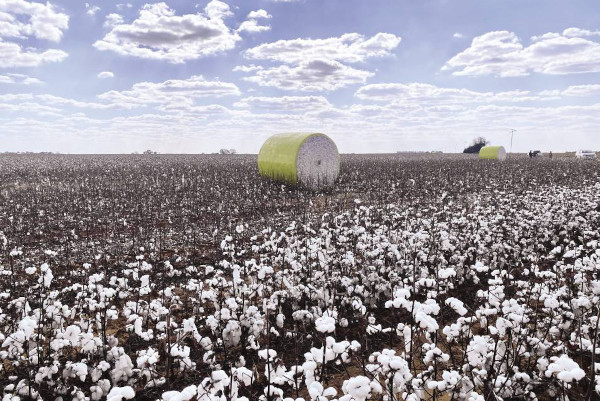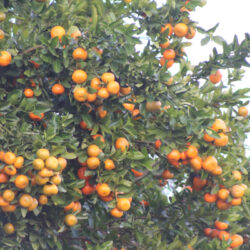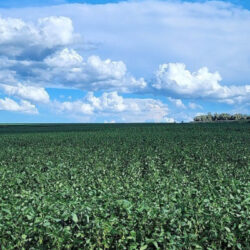With careful planning, cotton can provide a healthy cash injection for farmers in the drier summer rainfall regions of North West and the Northern Cape.
Northern Cape and North West farmers who plant cotton within a crop rotation programme can be successful. This is according to Jozeph du Plessis, a member of Grain SA’s executive committee and director of Cotton SA, the industry body representing the cotton value chain in South Africa.
The Northern Cape has long been a good cotton-producing area, and some of the country’s best fibre is produced under irrigation along the Orange River. Irrigated cotton can achieve yields of up to 7.5 tons/ha of seed cotton.
Speaking to farmers at an information day on his farm outside Schweizer-Reneke, Du Plessis said North West holds great potential for dryland production. “There is an opportunity for farmers in South Africa to grow more cotton for export as well as to boost local consumption,” he says.
“The climatic conditions of North West and the Northern Cape are ideal for cotton, which requires a significant amount of heat units to grow successfully.”
About 80% of the cotton produced in South Africa is exported to China and the Far East. Cotton is traded in dollars, and if the trading process is handled correctly it can be rewarding for farmers.
Louis Olivier, managing director of Vaalharts Cotton in Hartswater, Northern Cape, says drier conditions are predicted for South Africa’s summer rainfall region in the coming years.
“Cotton is a crop that thrives in heat and drought. It can grow with as little as 300mm of rain during the growing season in the drylands of North West.”
Olivier also has a management contract at the Limpopo Valley Cotton ginning mill in Marble Hall. There, producers receive an advance based on their volume of seed cotton, as well as a final payment based on its fibre content.
They also receive income from the linters, which are the short fibres that cling to cotton seeds after the long fibres have been removed in the ginning process.
Profitable
According to Olivier, the input costs of cotton are similar to those of maize and soybeans, “but the net income per hectare is much higher”.
Olivier says Vaalharts figures for 2023 show a net profit for cotton of R18,179/ha, compared to R3,200/ha for maize and R14,000/ha for soybeans. Du Plessis and three other farmers in the area planted cotton for the first time in 2017 and have systematically increased plantings since then.
“We previously practised crop rotation with maize, sunflowers and soybeans. For us, it was definitely worth starting with cotton plantations. Over the past six years, cotton has been the most profitable crop out of the three crops we farm.”
Intensive attention
However, Olivier and Du Plessis warn that cotton, unlike maize and soybeans, requires intensive attention. “You can’t just drive around the fields and see how the plants look. You have to walk through the rows yourself and do regular inspections,” says Du Plessis.
The cultivars currently being planted are DP1541, DP1240, DP18 RF, PM3225 (for small-scale farmers), and Candia. In dryland areas, these cultivars should be planted around the end of October.
It must rain before planting can take place because cotton seeds cannot be planted deeper than 5cm and the soil must be adequately moist.
According to Olivier, cotton seedlings are vulnerable shortly after planting, and they must be protected against wind. “The challenge is to get the plants to knee height. Then they are much stronger.”
It takes 160-180 days for the plants to produce a mature fibre. By the time the first frost occurs, all the plants are usually ready to be harvested, even if the planting was two weeks later than intended.
Start with the end
According to Du Plessis, farmers who want to start growing cotton should focus their planning on the harvesting process. “The equipment used for harvesting cotton is very expensive and scarce,” he says.
“You get a stripper, also known as a harvester, and a picker. The harvester can harvest about 20ha a day and the picker about 35ha a day. In a season, a harvester can harvest approximately 750ha and a picker about 1,500ha.”
He recommends that farmers who cannot afford the equipment should look for contractors who can harvest the cotton for them. “Vaalharts Cotton does not provide contract harvesting services for producers, but we will help farmers connect with the right contractors,” says Olivier.
Wilber Rudman, who is involved in cotton trading, says this is where farmers have struggled in the past. The longer it takes to harvest, the longer it takes for the producer to get their grading results, and the longer it takes for them to receive payment, especially in the case of contract ginning.
“The available equipment in South Africa is limited, and when cotton is ready for harvesting, it must be picked as soon as possible. Then farmers don’t understand if they are second or third on the waiting list for a contractor’s picker or harvester.
“Around 2013-2014, the number of hectares planted in South Africa exceeded the availability of picking capacity. This caused problems,” says Rudman.
That’s why Du Plessis recommends that farmers start planning their harvesting method before planting cotton. “Contractors charge about R6,000/ha for cotton harvesting. That is 10 times more expensive than maize, which costs about R600/ha.”
Collaboration
Du Plessis explains that he and three other farmers from Schweizer-Reneke decided in 2016 to plant cotton in 2017. “We then decided to collaborate because the reality is that the equipment is very expensive, and individually, we couldn’t justify it financially.
“In 2017, we established the company Schweizer Cotton Group, and the company purchased a new John Deere cotton harvester in 2018 to harvest all of our cotton crops.
“We adjusted the number of hectares each of us planted according to the machine’s harvesting capacity. It was then approximately 1,000ha in total,” says Du Plessis.
Later, they contracted the harvester out to other farmers after they finished harvesting. With the good income they earned, the company was able to buy a cotton picker in 2019, and the farmers then expanded their plantings to 2,000ha.
In 2021, they bought another picker and gradually expanded their plantings further. The company obtained financing for each piece of equipment.
What does the future hold?
Dr Annette Bennett, the executive head of Cotton SA, hopes more hectares will be planted in 2023-24, and believes the value of cotton as a rotational crop will become even stronger.
“Producers must focus on following the basic production strategies and can still deliver more than 2.5 tons of seed cotton/ha on dryland and more than 6 t/ha under irrigation in a good year using the existing cultivars.”
Sugarcane producers have long seen the benefits of rotating cotton with sugarcane and crops such as soybeans.
“Cotton also helps with soil compaction alleviation, reduces the inputs needed for the subsequent crop, and leads to an increase in yields in the following crop. These trends have been observed for a long time, and cotton can make a difference for you,” says Bennett.
A range of pesticides are registered for cotton. “There is only one product registered for nematodes. There is a need for a cheaper product.”




